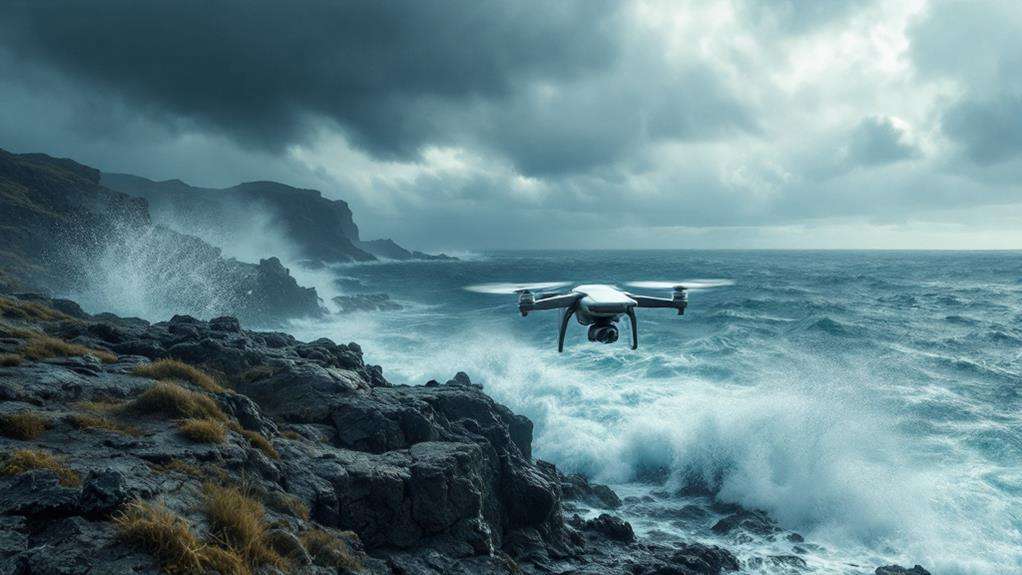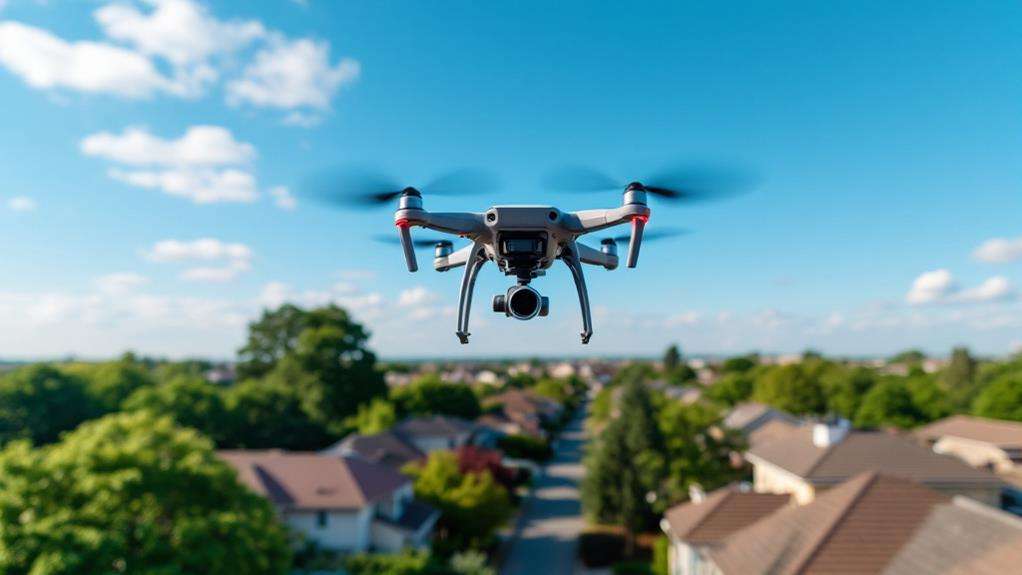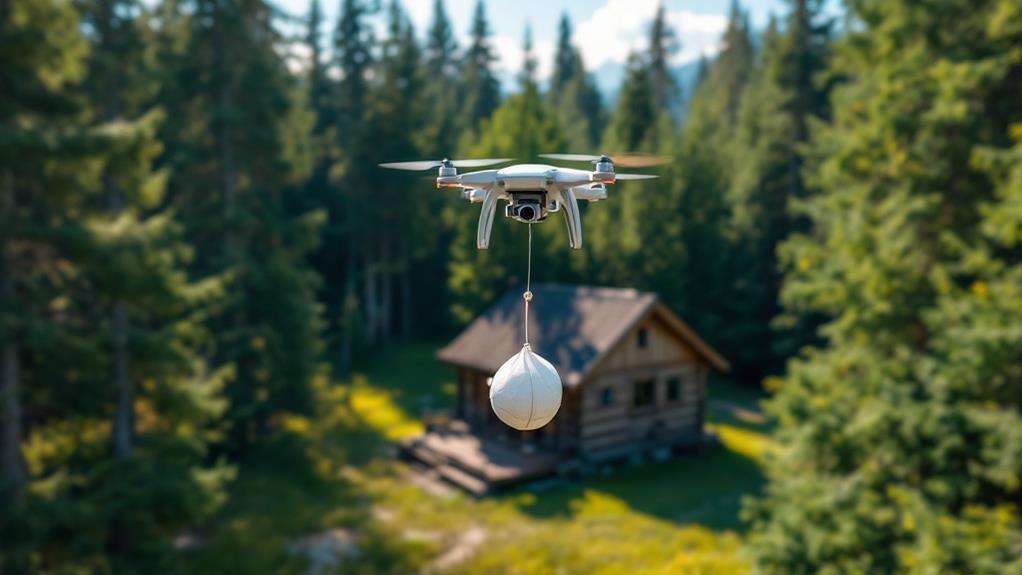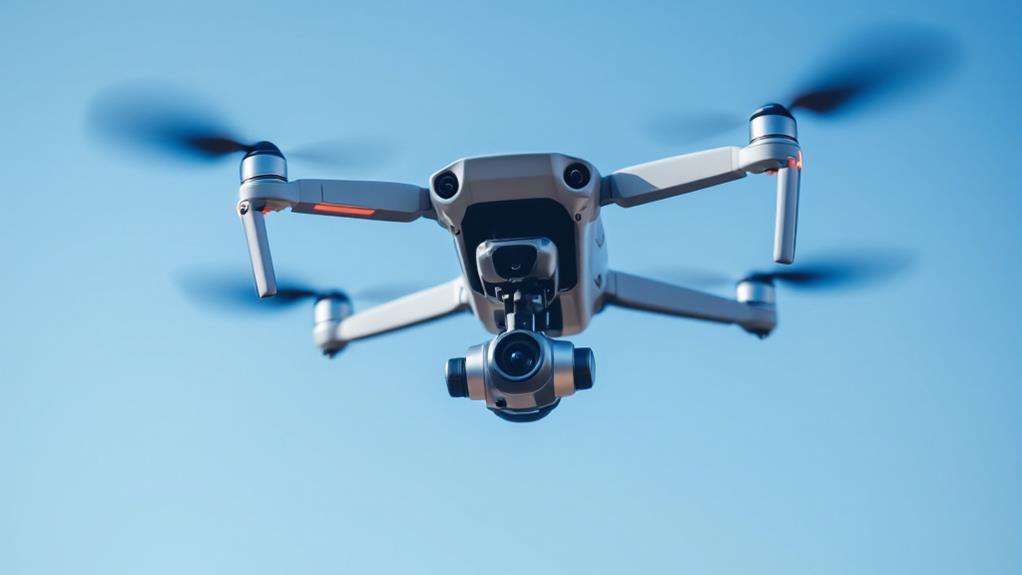How Do You Transport a Drone?
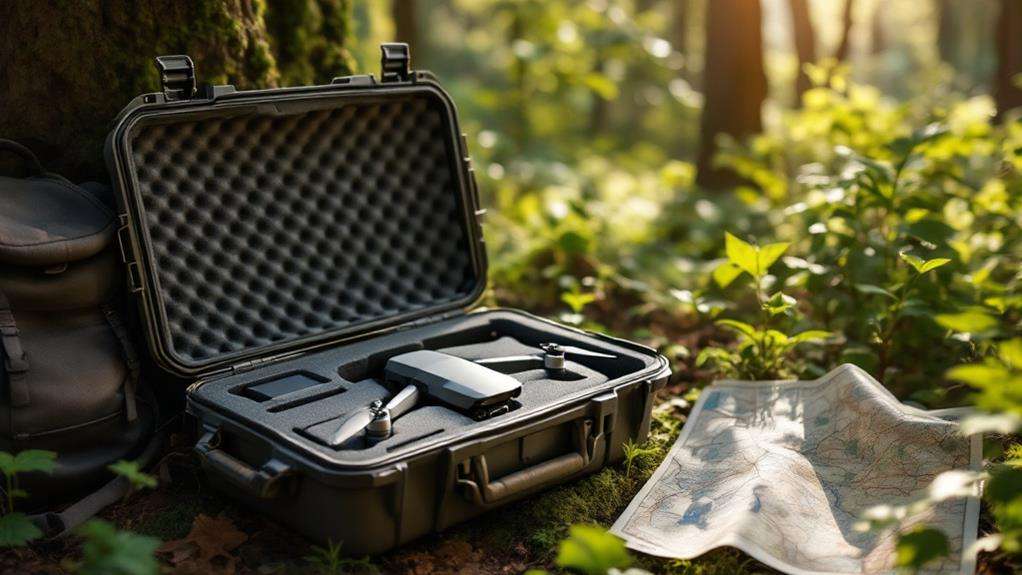
When transporting your drone, first check the airline's specific regulations. Use a padded case to protect it, and detach propellers for safety. Keep lithium-ion batteries in your carry-on, as checked baggage restrictions apply. Fifty watt-hour or less batteries can go without approval, while those over 100 Wh might need it. Secure spares in protective cases. Bring your Remote Pilot Certificate and prep all necessary documents for customs, including registration and proof of purchase. Be aware of the drone laws in your destination country to avoid any nasty surprises. There's even more to explore in ensuring smooth transport.
Key Takeaways
- Use a padded case to protect the drone and detach propellers for safe transport.
- Carry LIPO batteries in fireproof bags within your carry-on luggage.
- Ensure the drone's batteries do not exceed 100 watt-hours without airline approval.
- Keep documentation like the Remote Pilot Certificate and proof of purchase readily available.
- Research and comply with destination country's drone regulations and customs requirements.
Understanding Airline Policies
When transporting a drone by air, it's essential to understand airline policies that can vary widely. Each airline has its unique regulations, so it's important to verify the specific rules of the airline you're flying with. To ensure compliance with both airline and local regulations, operators should also be aware of any additional permit requirements when traveling to different locations. Generally, most airlines, like American Airlines and Delta, allow drones in carry-on luggage, while some might require them in checked baggage. Knowing these drone policies beforehand can save you from unexpected hassles.
Lithium-ion batteries are a crucial consideration. Airlines usually permit these batteries in carry-on luggage, not in checked baggage due to safety regulations. Spare batteries also need special attention; for example, Southwest Airlines allows up to 20 spare lithium-ion batteries as carry-on items, whereas JetBlue restricts you to just 2 spare batteries between 100 and 160 watt-hours. Understanding these nuances is vital for smooth transport.
Drone dimensions are another factor. Many airlines restrict carry-on dimensions to about 22 x 14 x 9 inches (56 x 36 x 23 cm). Additionally, during security checks, TSA requirements may necessitate removing larger electronics from your bags. Alerting TSA agents about your drone can streamline the process, ensuring a more efficient travel experience.
Packing Your Drone Safely
Packing your drone safely is crucial for ensuring its protection during transport. Start by using a specialized drone case that's padded and designed to cushion your equipment from impacts. When you pack your drone, remember to detach the propellers and store them separately. This reduces the risk of breakage, ensuring that all loose parts are secure and won't jostle around in transit. Additionally, if you are a commercial drone pilot, make sure you have your Remote Pilot Certificate with you, as compliance with FAA regulations is essential when transporting your equipment. LIPO batteries are sensitive, so always keep them in your carry-on luggage. Store these batteries in fireproof bags to prevent any chance of short circuits. Before you travel, make sure the batteries don't exceed 100 watt-hours unless you've obtained airline approval. It's essential to follow drone rules about carrying lithium-ion batteries to avoid any issues at the airport.
Additionally, check your airline's rules for drone dimensions. Most allow drones as carry-on luggage if they fit within 22 x 14 x 9 inches (56 x 36 x 23 cm). Double-check that your drone is powered off and all switches are secured to prevent accidental activation. By adhering to these guidelines, you can transport your drone safely and stress-free.
Navigating Battery Regulations
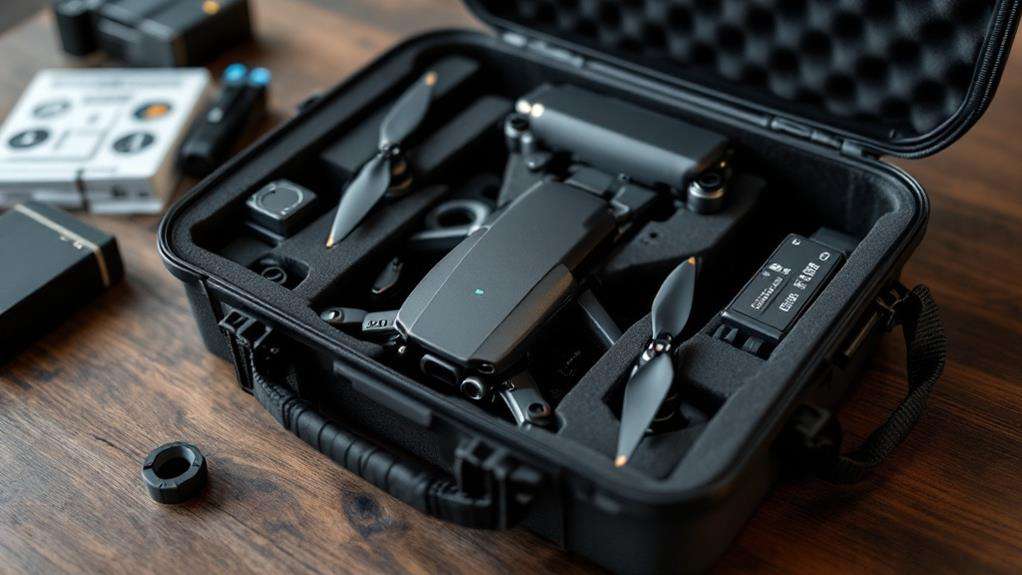
Before you embark on your journey, understanding battery regulations is crucial for a smooth experience at the airport. Transporting your drone's lithium batteries requires careful attention to airline policies and safety regulations. Ensure your batteries are placed in your carry-on luggage because spare or uninstalled batteries are prohibited in checked baggage. This is a safety precaution to prevent potential fire hazards.
Here's a quick guide to airline rules:
| Battery Type | Regulations |
|---|---|
| Under 100 Wh | No airline approval needed; up to 4 spare allowed |
| 101-160 Wh | Airline approval required; typically 2 spare |
| Spare Batteries | Must be packed in protective cases |
| Installed Battery | One battery must be installed in the drone |
Airlines like American Airlines permit up to four spare batteries under 100 watt hours, while JetBlue allows two spare batteries between 100 and 160 watt hours. For batteries over 100 watt hours, you'll need airline approval, and usually, only two spares are allowed. Always pack spare batteries in protective cases to prevent short circuits. Remember, your drone should have one battery installed during transport to comply with safety regulations, ensuring your journey remains hassle-free.
Clearing Customs With a Drone
Traveling internationally with a drone can be a smooth process if you're prepared to navigate customs regulations. Before you take off, research the destination country's specific rules regarding drones. Some nations require permits for drone usage, and not having these can lead to issues. For instance, countries like Nicaragua and Morocco mandate permits, and failing to declare your drone at customs might result in confiscation or fines. It's essential to declare your drone upon entry to avoid strict penalties.
In the U.S., registering your drone as a "Personal Effect Taken Abroad" can help clarify ownership upon your return, preventing misunderstandings at customs. This step ensures that your drone is recognized as your personal property and not an item you're importing. Always have documentation like proof of purchase and registration certificates ready when traveling. These documents can facilitate a smooth process during customs inspections.
Preparing for International Flights
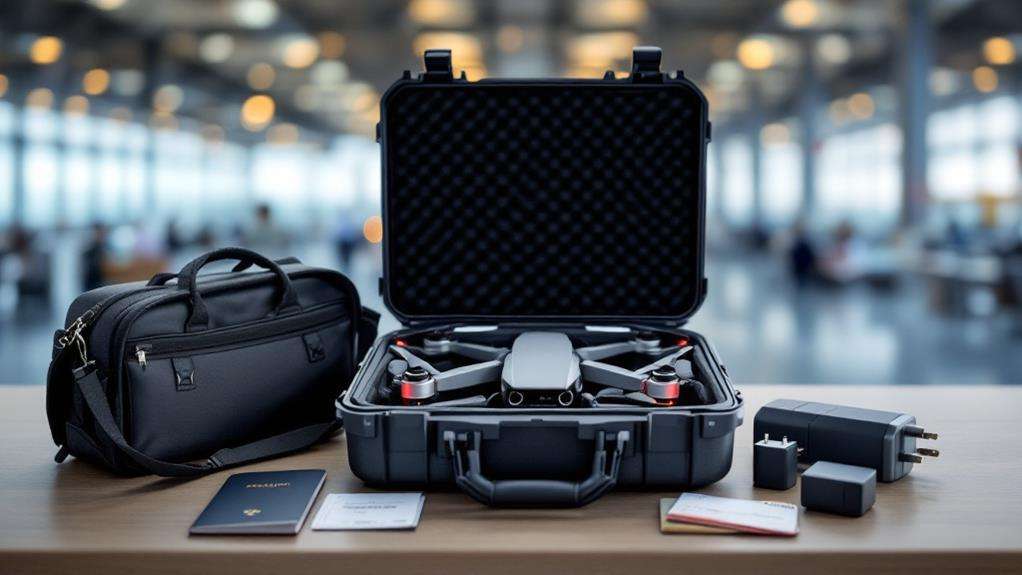
When preparing for international flights with your drone, thorough research is your best ally. Start by diving into the drone regulations of your destination. Many countries have strict rules, and some require permits for drone operation. Make sure your drone registration is up to date if the destination mandates it, and be ready to show documentation when you arrive.
For safety transport, pack your LIPO batteries in your carry-on luggage. Airlines usually prohibit spare batteries in checked bags, and you must comply with watt-hour limits. This ensures you avoid issues during security screenings and prevents potential safety hazards.
Familiarize yourself with customs procedures related to drone importation. Declaring your drone at customs might be necessary, and understanding these requirements helps you sidestep fines or confiscation. Additionally, consider getting liability insurance for your drone. This is especially crucial for international travel, as some countries require proof of insurance for drone operations.

